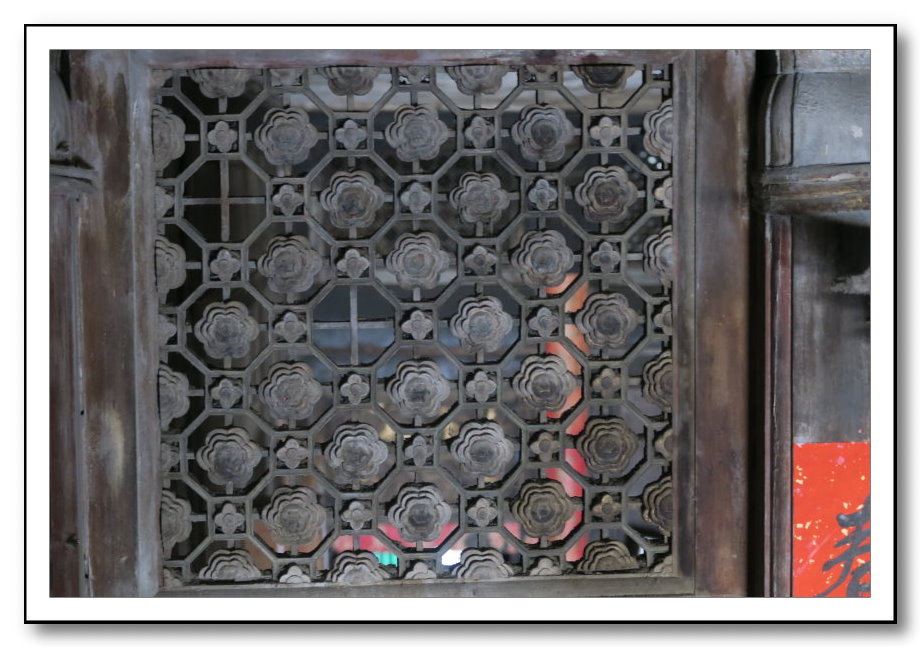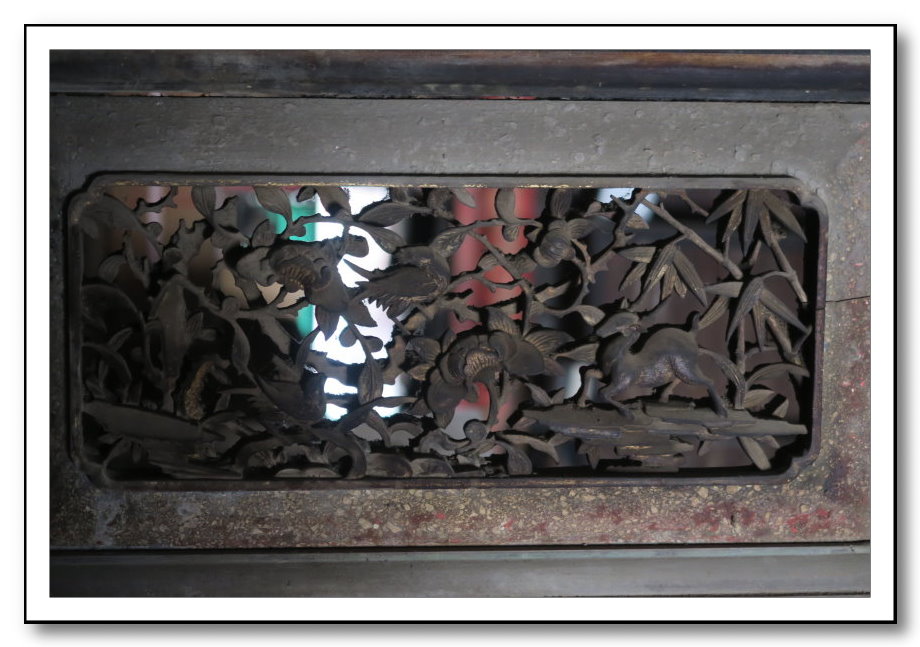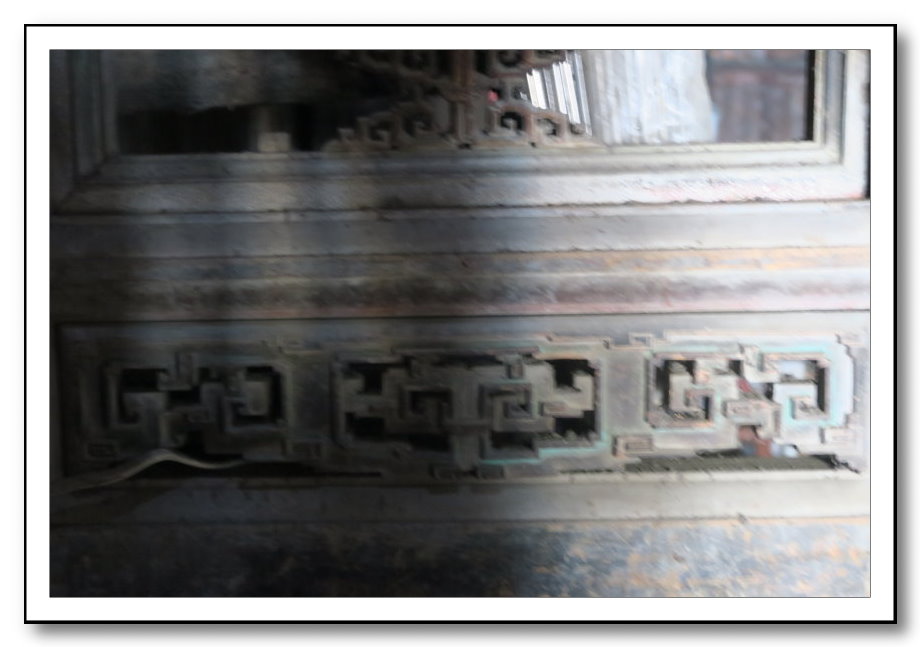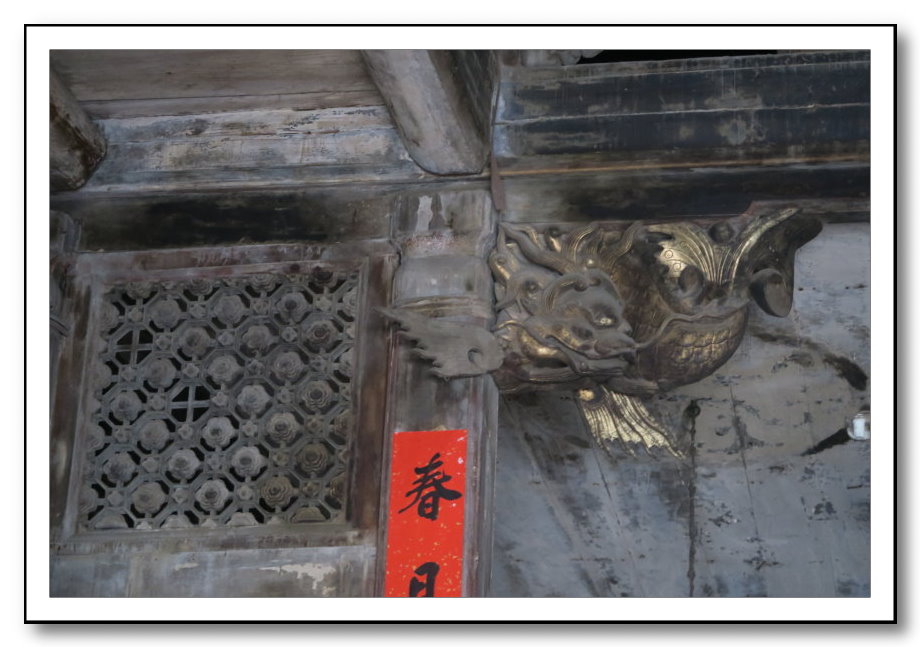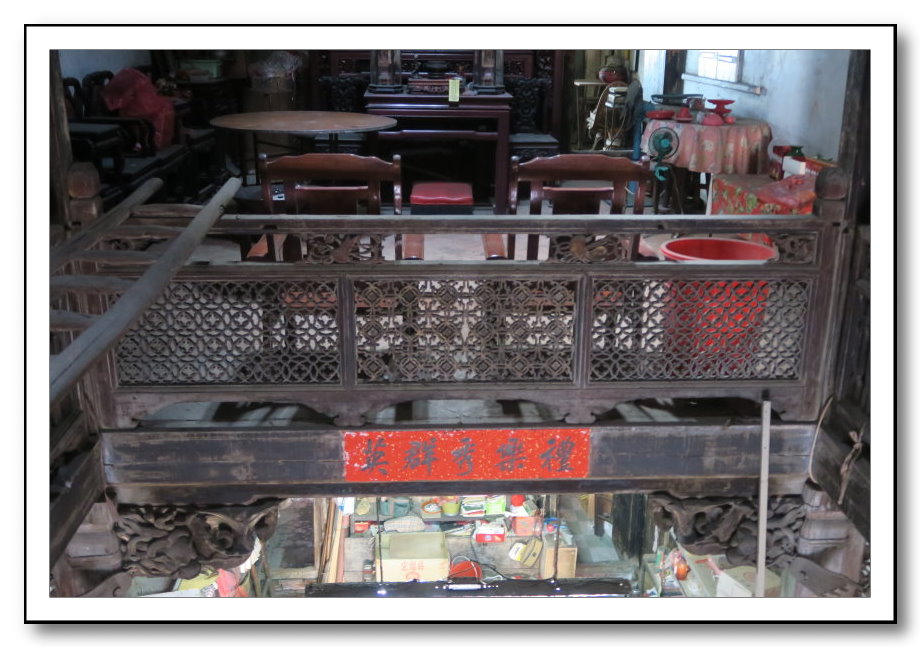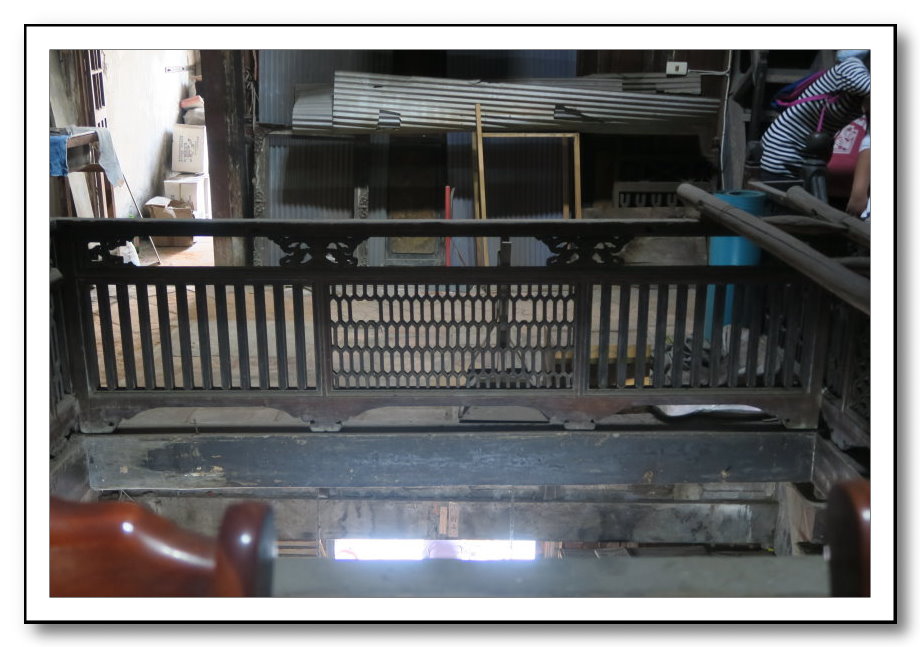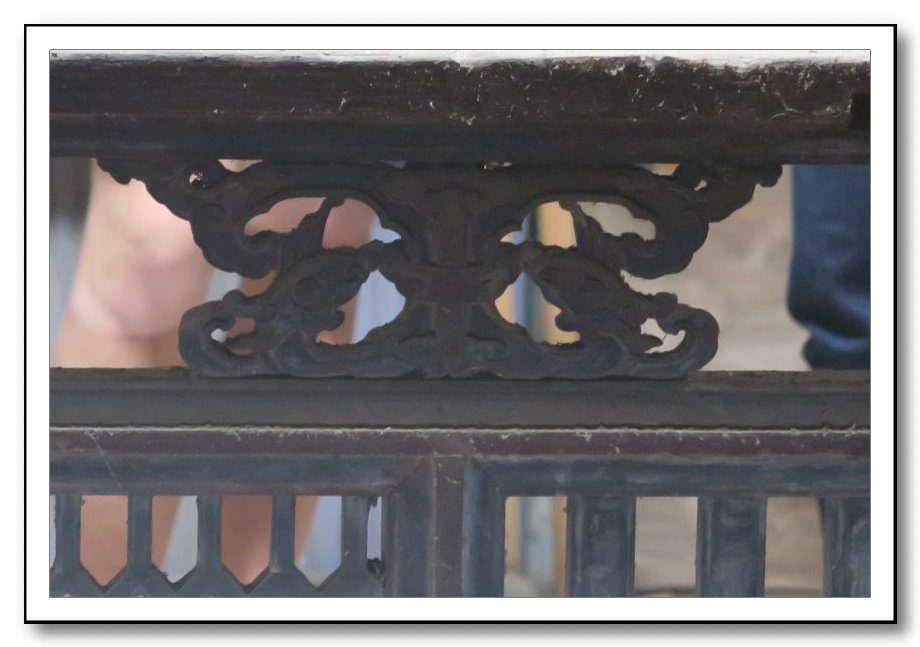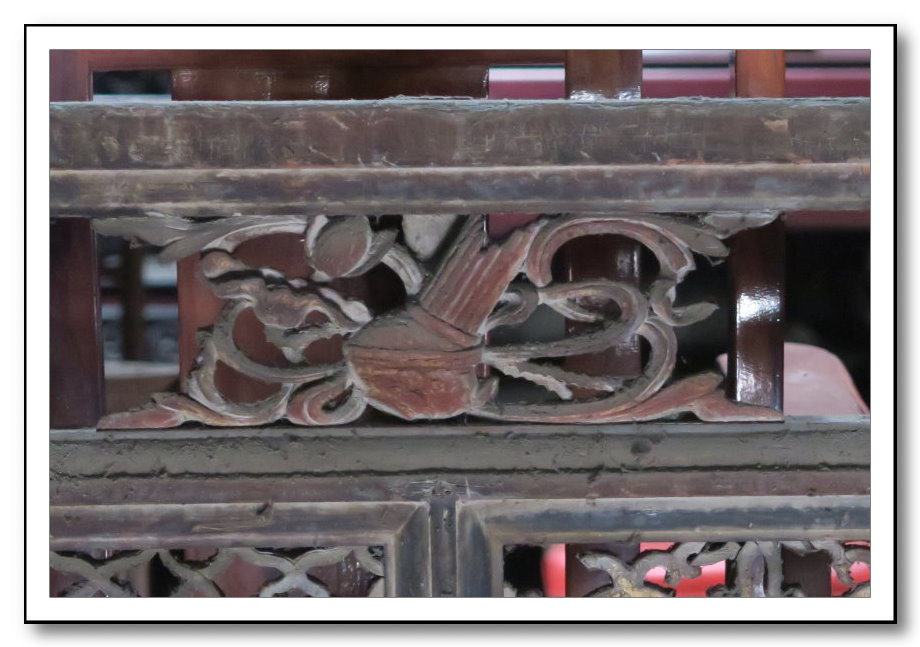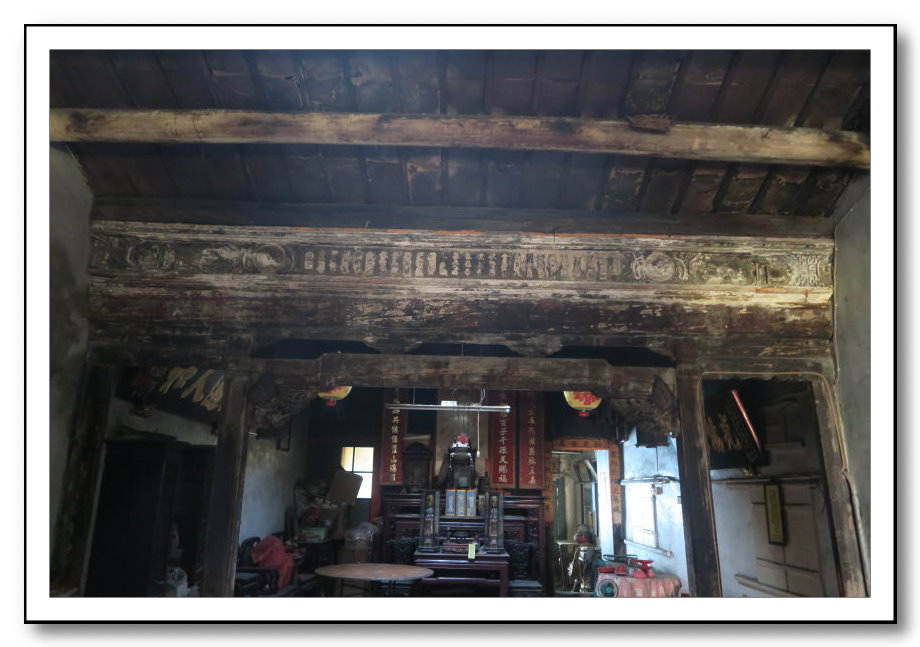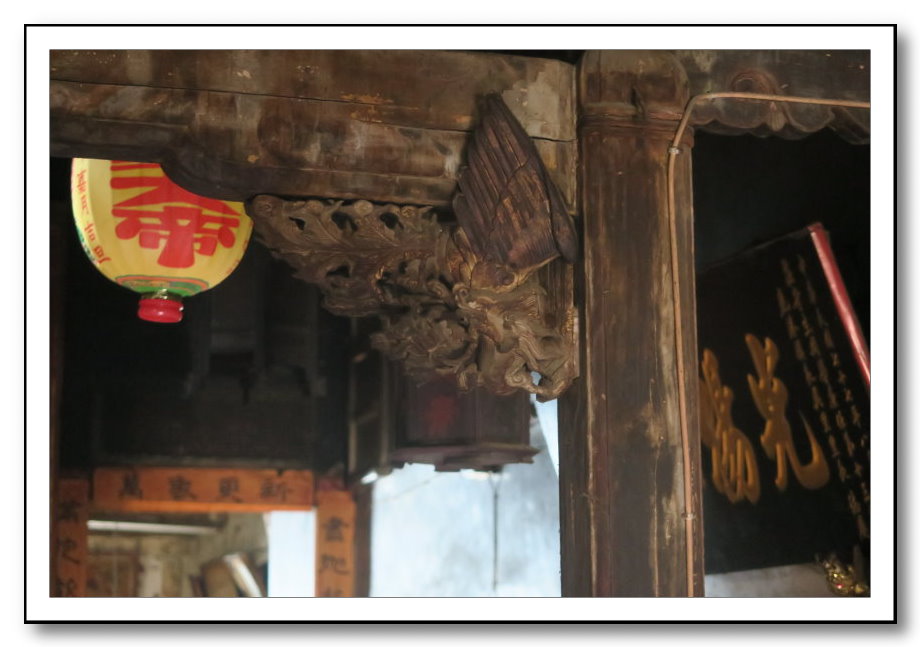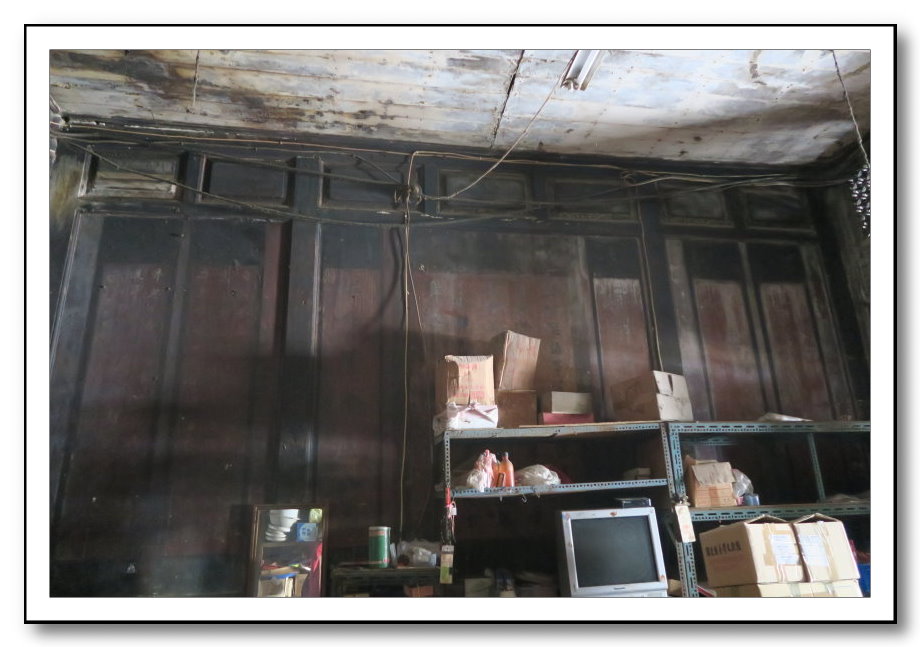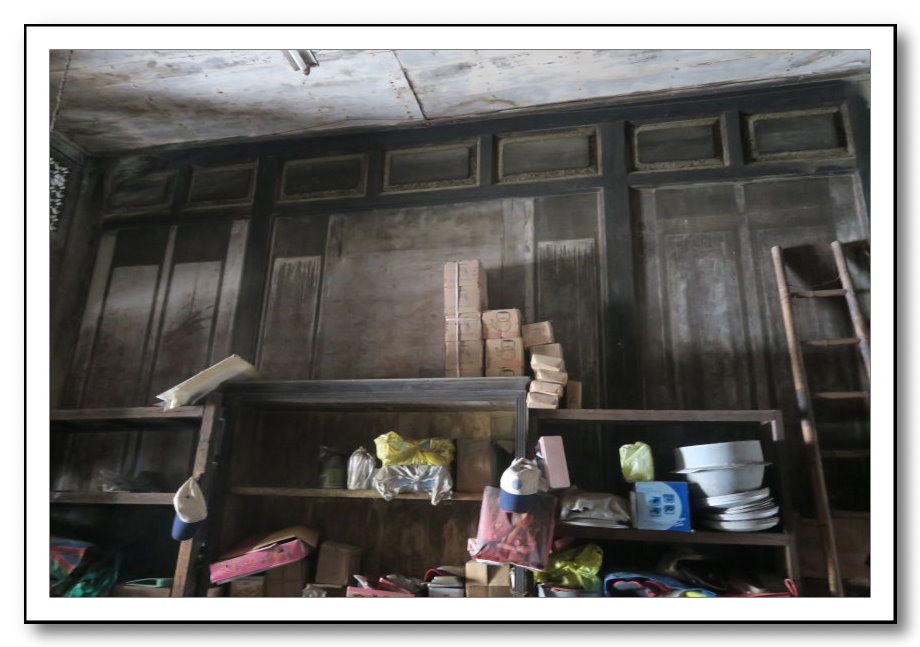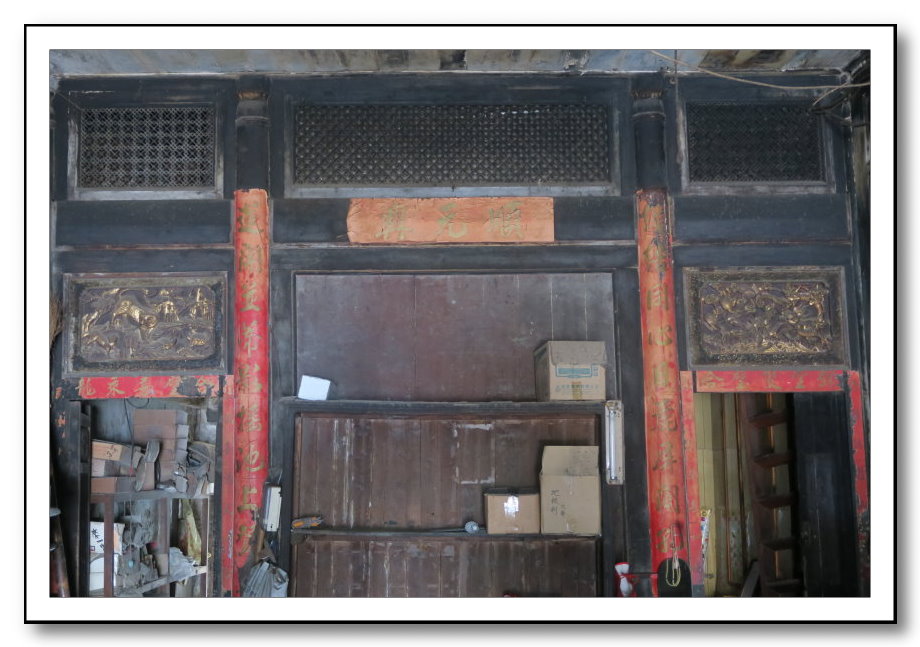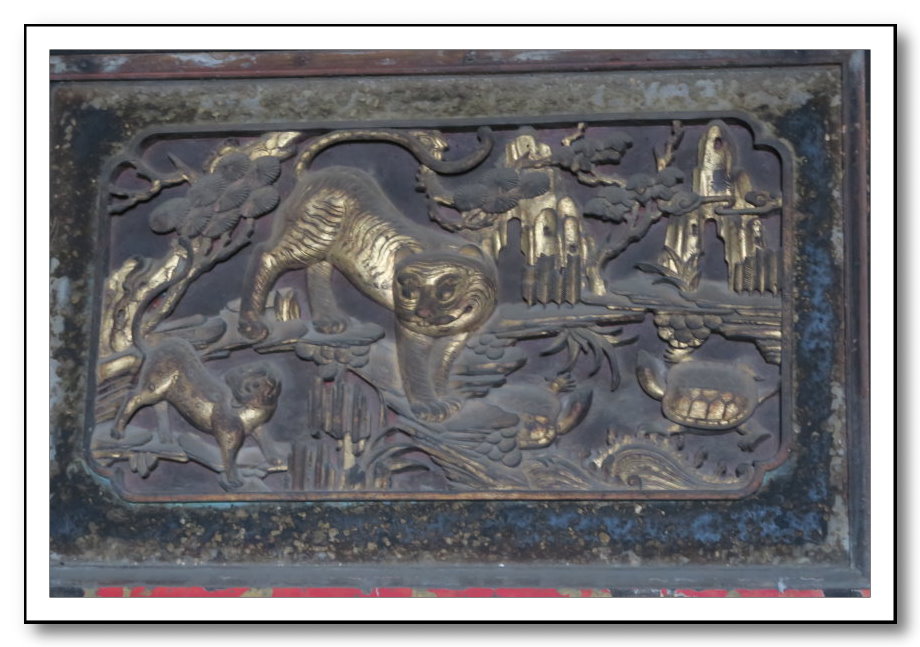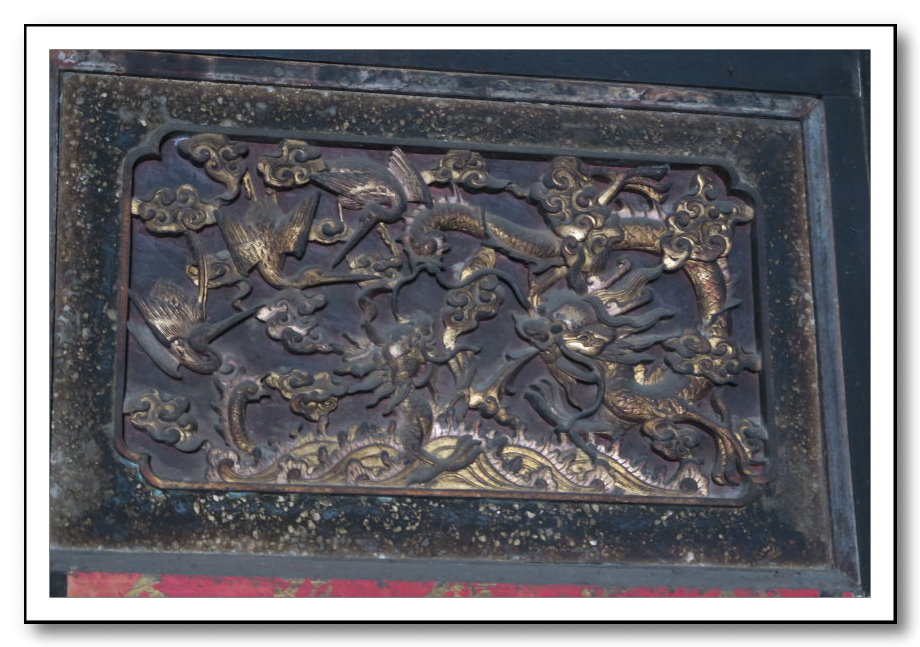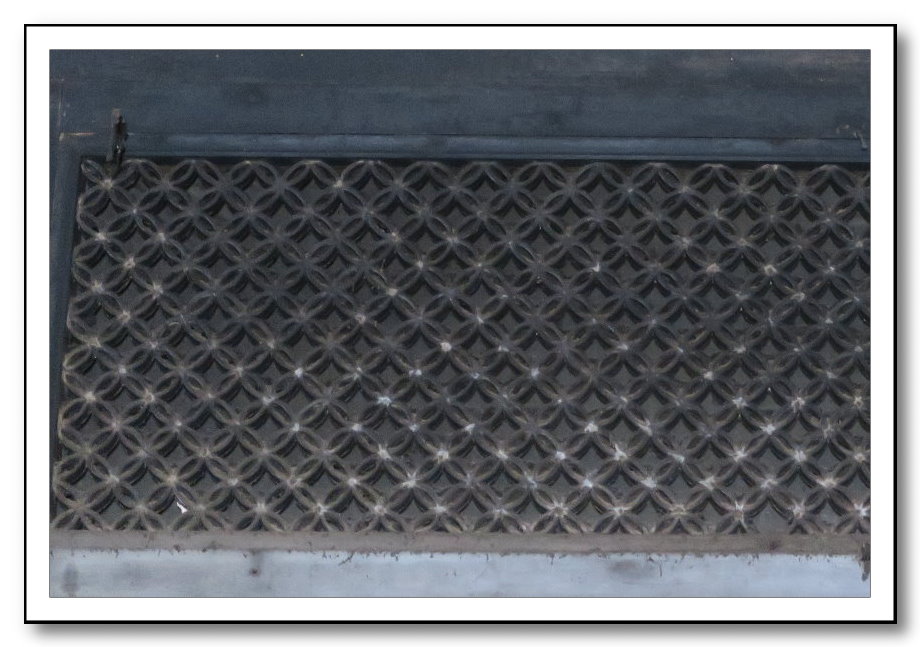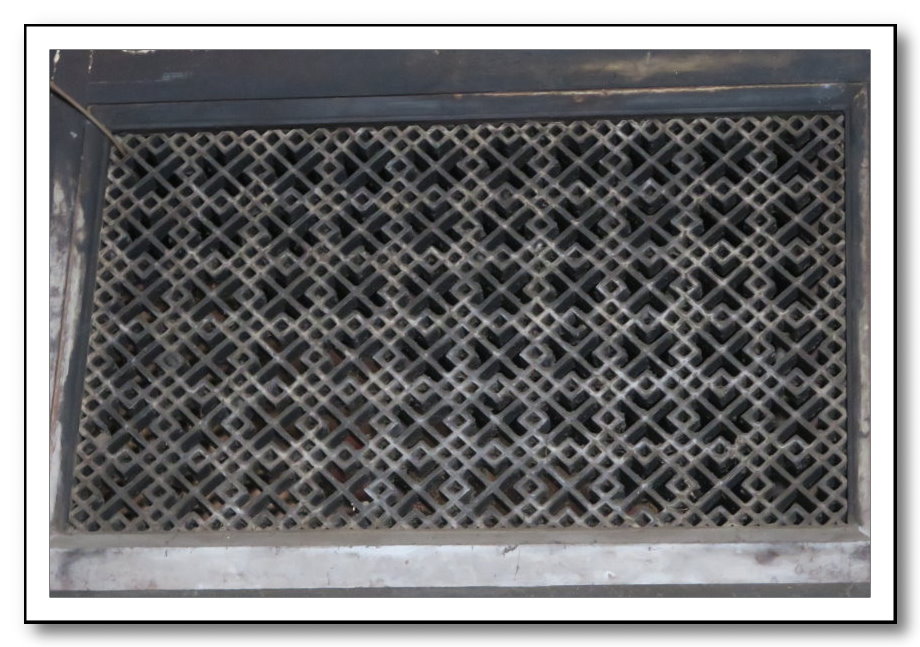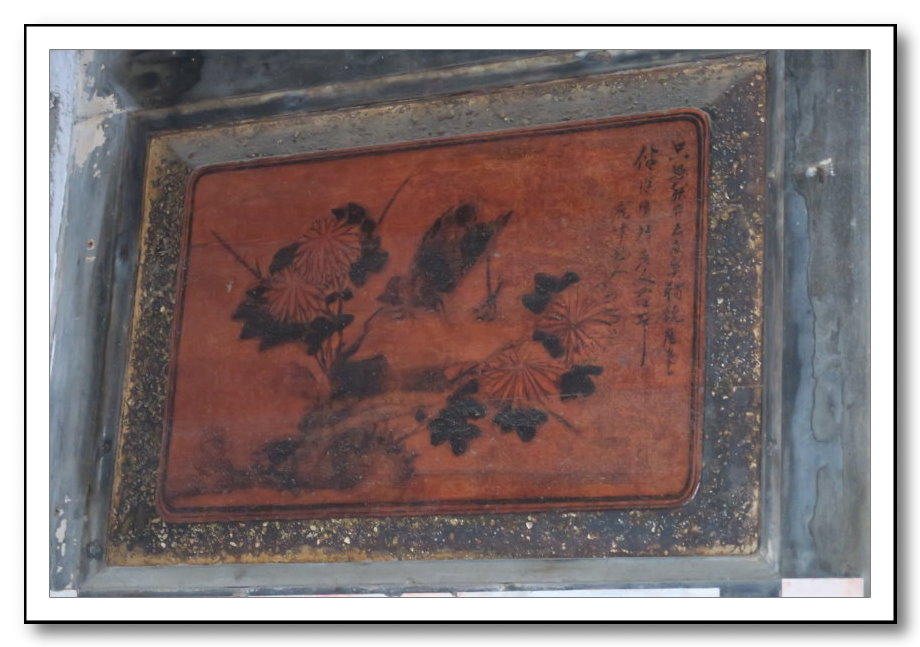|
|
|||||||||||||||||||||||||||||||||||||||
|
|
Decorative art Decoration of No. 149, Zhongshan Rd. is mostly in patio hall, main hall and back hall of the first floor. It shows the owner’s life aesthetics, as shown below:
I. Patio hall 1. Partition board of the first floor Partition boards are installed on both sides of patio hall. The top of the board is decorated by openwork carving of peony pattern; on the bottom, there is the pattern of “wealth and fame”. Tiger jaw block (at the middle of partition door as humans’ belt) is decorated by “hard tiger pattern”. “Type of lines” of patterns on traditional buildings is classified into “hard line” and “soft line”. Hard line is mostly presented by inflexible lines. The turns are particularly shown by right angles; “soft line” is soft curve without inflexible straight lines or right angles. Chi Tiger is one of sons of dragon in the legend. It is auspicious beast and represents good fortune. Sparrow brace below the purlins shows “Ao Yu turning the head” of single-sided sculpture. It means to pray for rain and prevent the fire. “Ao Yu” was dragon related animal in the legend. It had dragon head and body of carp. It is said that it liked to swallow fire. Traditional buildings tended to be made of wood and could not resist fire. Thus, it often appears on pillars or ridges. It is the decoration and also means to prevent fire. “Sparrow brace” is called “Tuo Mu” which can reinforce wood bracket structure.
2. Patio railings on the second floor Patio wooden railings of patio on the second floor. The belt is mostly carved with “Guai Zi dragon” which is the transformed pattern of dragon. It has the head of dragon; however, the body curves as creeping weed. It symbolizes wealth in the following generations; the front sculpture “Bi Ding” is the pattern of plant and it symbolizes literary talent and fortune. Board of railing is carved with overlapping pattern of coin, pattern of rolled silk ball and pattern of persimmon, tortoise shell pattern and mullion. “Pattern of coin” symbolizes fortune; “rolled silk ball” is the festive object in ancient time; “persimmon (Shi)” of “pattern of persimmon” is homonym of “thing (Shi)”. Thus, it means “all goes as you wish”; “tortoise” symbolizes longevity. They all mean good fortune.
3. Top block of the second floor On top block of the second floor, there was originally clay sculpture. However, it was peeled off and cannot be recognized; technique of sparrow brace is based on openwork carving with the pattern “phoenix holding peony”. Phoenix is the head of the birds and peony is the king of flowers. It means “the peony comes and it leads to blossom”. It is traditional auspicious pattern.
II. Main hall Left and right walls of main hall are decorated by calligraphy and painting and the mark slightly remains. On the front, wooden board serves as partition wall. Horizontal panel window is installed on horizontal inscribed board. Pattern of rolled silk ball is carved in the middle and long openwork carving is on the left and right sides. Top block on the left under horizontal inscribed board is carved with one large and one small dragons and red-crowned crane. On the right of top block, there is the sculpture of large and small tigers and tortoise. According to ancient people, the world was protected by auspicious beasts. Blue dragon is on the left and white tiger is on the right. Tortoise and red-crowned crane symbolize longevity. Wooden sculpture is covered with golden paint.
III. Back hall On the first floor, there is wooden partition wall in back hall. The painting in the middle is three gods of “fortune, prosperity and longevity”, also called “Cai Zi Shou”. The one who stands in the middle is “star of wealth”, also called “star of fortune” and “heaven official”. It means “blessing of heaven official”; the senior on the left who has forehead stuck out and holds cane and peach is “deity of longevity”; the one on the right who holds the child is “star of happiness”, also called “star of child”. In the painting, there are five children and it means “may five sons achieve great success in the imperial examination”. It is the painting with the most characters among all three gods patterns. Horizontal panel window is installed on horizontal inscribed board with overlapping patterns of coin and persimmon in the middle. “Persimmon (Shi)” is homonym of “thing (Shi)” and thus it symbolizes “all goes as you wish”. Calligraphy painting on both sides refers to flower-and-bird painting. The left is peony and Paradise Flycatcher (Shou Dai). Peony means “wealth”. “Shou” is homonym of “longevity”. Thus, it symbolizes “fortune and longevity”. The right is chrysanthemum and cock. “Chicken” is homonym of “Chi”. Chrysanthemum can prolong life, and is also called flower of longevity. It represents “fortune and longevity”.
Three gods of “fortune, prosperity and longevity”/overlapping patterns of coin and persimmon on horizontal panel window
( Source of text: Research on Shi-yi Building, historical building of Lukang and narration by Yan-yu Chuang ) ( Pictures are made by the team members. )
|
||||||||||||||||||||||||||||||||||||||
|
|
|||||||||||||||||||||||||||||||||||||||















